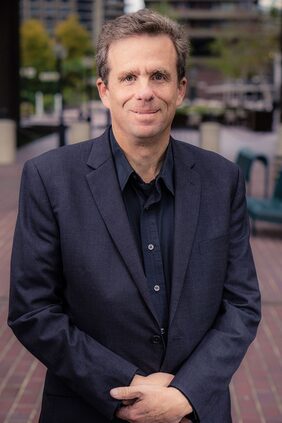
David Dolan stands out in the world of classical improvisation. Why?
He's an important pedagogue who specialises in teaching non-improvisers (classically-trained musicians at the highest level, who have experience only in interpreting written scores) to improvise. This means that not only has he devised ways of overcoming ingrained habits of musical practice, ideological beliefs associated with these habits, and the consequent creative barriers of classical training, but - and this particularly appeals to me - his teaching stays within the repertoire of classical music: that is, he does not resort to another type of music such as jazz, or free-style improvising, but takes classical models as the basis for experimentation.
This post is based on an article he wrote in 2005, entitled Back to the Future: towards the revival of extemporisation in classical performance. Dolan's teaching approach starts from the consideration of improvising knowledge (what does one need to know in order to improvise). This knowledge base he defines through the idea of 'schemes' - the 'learned musical schemes' of a particular musical style and culture, and the 'natural schemes' which are more universal aspects of human perception, being related to speech, expressive body language, sense of proportion, variety, etc. Often these two different types of schemes meet in musical language, for example many musical structures take the form of an 'arch' which describes a natural trajectory through space and time, comprising a point of departure, and a highest point, from which the journey back to earth begins.
To improvise then, one needs to acquire not only theoretical and practical knowledge - knowledge of musical elements and instrumental technique - but also knowledge of how to manipulate this knowledge, how to mobilise one's skills towards expressive ends.
Dolan, thus puts refutes a common concept in improvising pedagogy: that one needs to first learn 'facts' or patterns through abstract exercises which are then (somehow) transformed into expressive, fluent improvised music. Instead he puts expressive gesture and communicative intent at the forefront of learning. Thus, students aim to make a broad gesture or communicative intention without reflecting too much over the details; once the gesture is made then one look back and consider what one did, and how to do it differently or better. As communicative gesture is movement based, there is a close afinity between Dolan's approach to learning and Jacques-Dalcroze' use of eurythmics, and insistence on learning through action first. Both men recognise the dangers of being lost in thought, the hesitation of conscious calculation, and how fear of errors can lead to lack of flow.
My feeling is that this type of learning is greatly assisted by the presence of an encouraging teacher as Dolan or Jacques-Dalcroze themselves. I can imagine the way in which Dolan constructs each exercise, establishes the criteria (rules of the game), gives critical or non-critical feedback, and so on, is very much part of the success of his teaching. Such a method might be more difficult to achieve on one's own, or where surrounding feedback is more critical..!
Dolan's work fills a much needed gap in knowledge of how to start improvising. While many theorists and writers agree on the kind of knowledge and skills needed to improvise, the actual process of acquisition is often left to the reader's imagination. Dolan lists a number of strategies by which nervous novices can begin to improvise and mobilise their learning experience. For example, he recommends setting improvising on given structures and frameworks - these can be created by reducing repertoire to skeleton scores in which just the main structural features are laid bare; the improviser then re-improvises the score on these features, creating new versions of the piece. Another technique is to set a structural goal point as the focus of the exercise and the focus of the student's attention, i.e., "improvise to this point in the piece" which helps the student to bypass the details of texture which tend to overwhelm one at the outset. This is significant in that Dolan recognises the role of critical feedback in novice improvisation - and how this must be suppressed to a degree at the outset in order for improvising (and learning) to flow.
Lastly, Dolan's articulation of improvisation as three elements - (i) a general knowledge base of patterns, moves and technical know-how, (ii) a 'referent' which is the stylistic knowledge structures used for a particular improvisation, and (iii) the ability to manipulate one's knowledge towards creative ends - is amazingly useful in considering the problems of improvisation pedagogy. All three elements are crucial to the improviser's skill, yet each element involves a different kind of learning approach. Whereas arguments over pedagogical methods usually rage over the question of rules versus freedom, Dolan's three elements (if we treat all three with equal respect) offer a varied and holistic approach to teaching. For example, one could work on developing the knowledge base through patterns, analysis, conscious control and even prescribed exercises; this work can also be extended to particular structures, forms and genres. Yet, important though this work is, it is not complete, for it's necessary also to approach the task in a completely different way, following one's imagination wherever it leads. Thus, neither 'rules' or 'imagination' is a complete pedagogy in itself, but is only a strand in the improviser's toolkit or armoury.
More on David Dolan's work can be seen through the METRIC organisation. http://metricimpro.eu/
Comments
There are currently no blog comments.